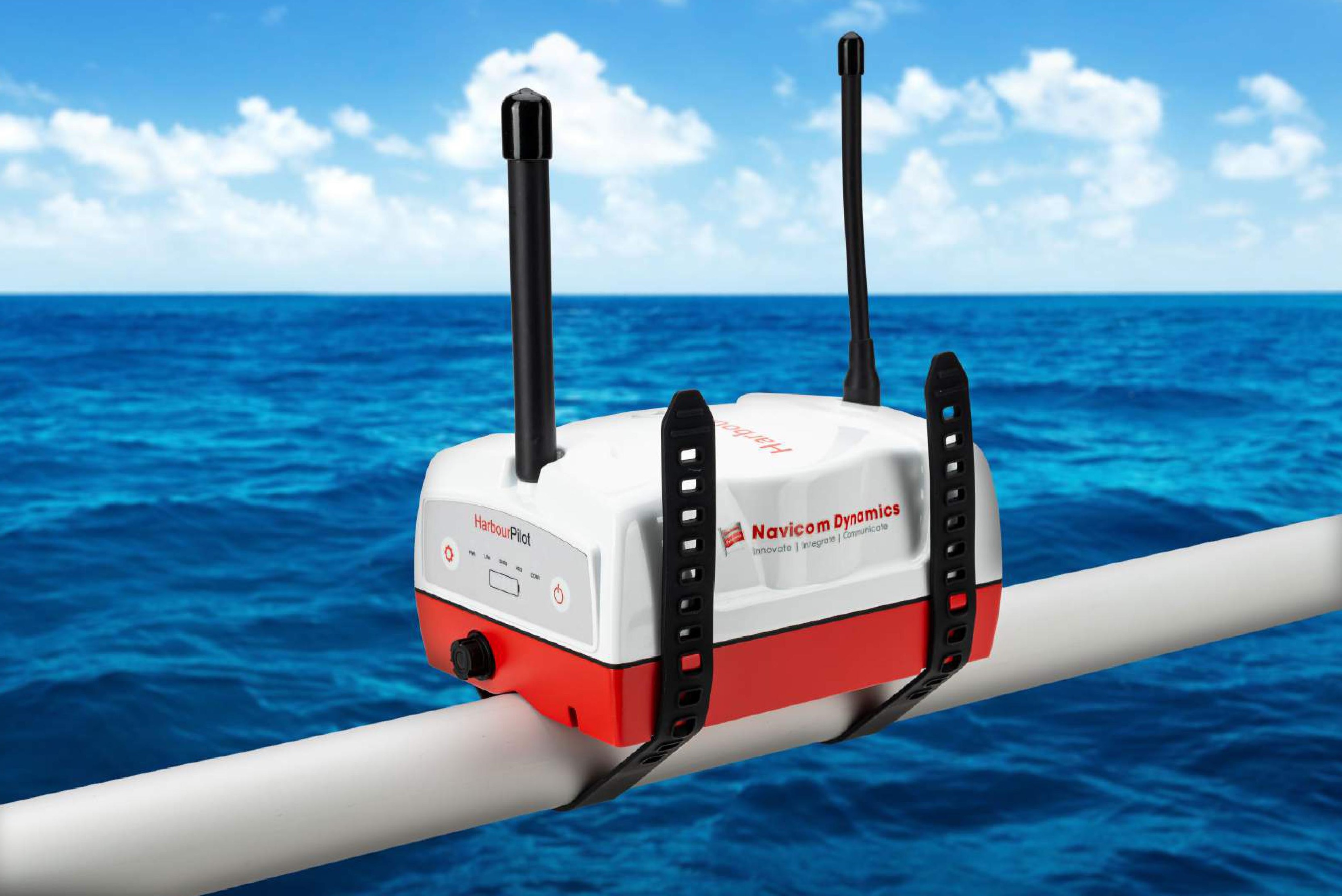Our CEO, John Tamis, and R&D and Engineering Lead, Kevin Blackmore, discuss the HarbourPilot Mk5, the latest Portable Pilot Unit that Navicom Dynamics has recently released to market.

Our Marketing Coordinator sat down with our CEO John Tamis and our R&D and Engineering Lead Kevin to ask them about the HarbourPilot Mk5. This Portable Pilot Unit, developed by Navicom Dynamics, is released and available for order now!
Why develop a new version of the HarbourPilot?
John: The current HarbourPilot unit was a great unit when it was developed. But recent technology allows for a lot of improvement, both in the size and weight as well as the functionality. We wanted to take advantage of those technologies and make a much better unit.
Where do you see the HarbourPilot Mk5 offering the most value to pilots?
John: Any operations when you require high position accuracy and/or you need full independence from the vessel’s existing navigational systems.
How does the HarbourPilot Mk5 differ from other Portable Pilot Units in the market?
John: We wanted the HP Mk5 to be easily upgradeable when new technology arrives and with the ability to add functionality in future. We have two free PCI slots so we can add components as ideas and technology comes up, which is unique to our systems.
Usually PPUs use what's called a moving baseline technique. We use what’s called a phase difference technique, and we believe that we’re the only ones to use this technique. We are convinced that this is a much better technology to use. You can have your antennae closer together and retain accuracy. So that makes it simpler to use and set up.
Our units have one processing unit, so you only need to charge one battery, which means less likelihood of failures. In other systems in the market, you have two or even three different units, which each have their individual battery system. If one of those units fail, the whole system fails. Also, there needs to be electronics within each individual pod, increasing complexity and, again, increasing the chance of failure.
Additionally, when you have units that are far apart and you don't have a simple cable RF connection between the two, then you've got to communicate with Wi-Fi, Bluetooth or other radio technology. And if there's any problems with that communication, your system fails. A simple system like ours is more reliable.
Tell us about the team who worked on the HP5.
Kevin: The HP5 development has been a collaborative effort within the whole Navicom family. We've got Engineers and Mariners who've got 40 plus years of experience. And we've got young people coming through, who push new and interesting ideas up the channels.
What have you found most exciting in developing the HarbourPilot Mk5?
Kevin: Having the opportunity to design something that's next generational and incorporates all these new technologies and in such a compact form factor, and then make it reliable.
What are the features that you are most excited about or most proud about developing?
Kevin: Having a product that incorporates GNSS, Bluetooth Wi-Fi, etc. has been exciting. But the features that I’m most excited about are things that are coming in the future. It's really exciting to create something which is a platform that we can build upon, and also incorporates new exciting technologies into an industry where there hasn't been much movement over the last few years.
John, what's been the biggest challenge for you on this journey?
John: During the development period, Covid-19 has caused a lot of problems within our supply chain, with parts going out of supply. That requires R&D and engineering work, it's been really difficult to keep up with that.
Another challenge was to keep the product as small as possible, and yet have it so that we can add features to it in the future. If you make it too small, like with a small laptop, you get to a point where you can't add any features to the system. But with a desk top, of course, you've got the PCI slots. How do you get the two together? How do you get such a small unit and still have the additional slots? That’s what we’ve actually managed to do, but it's been quite challenging.
And what are you most proud of?
John: We actually got it done! The whole team worked together to get it done. It’s just fantastic.
What's next for a Navicom Dynamics?
John: One of our main products is what's called the ShuttlePilot system. The industry wants systems to integrate into all of the unique and independent systems that they already have. If the ShuttlePilot system can connect to anything, anytime, to produce any data, it will make us unique in that supply area.
Another area that we’ll look at is how can software help us? How can software support the functionality that we provide our customers better?
Kevin: After we get a little bit of sleep, maybe a week or so, we can sit down and have a strategy session. Lots of stuff to look forward to and probably some more sleepless nights!
John: We’re always talking to customers and always thinking, what do they want? What are their requirements? What can we do to make their life easier, safer, simpler? Can we make life simple for them in a very complex environment? That’s our focus.
*edited for clarity and length
You can view our HarbourPilot Mk5 Portable Pilot Unit under our product pages, or contact sales@navicomdynamics.com to request a quote or further technical information.


